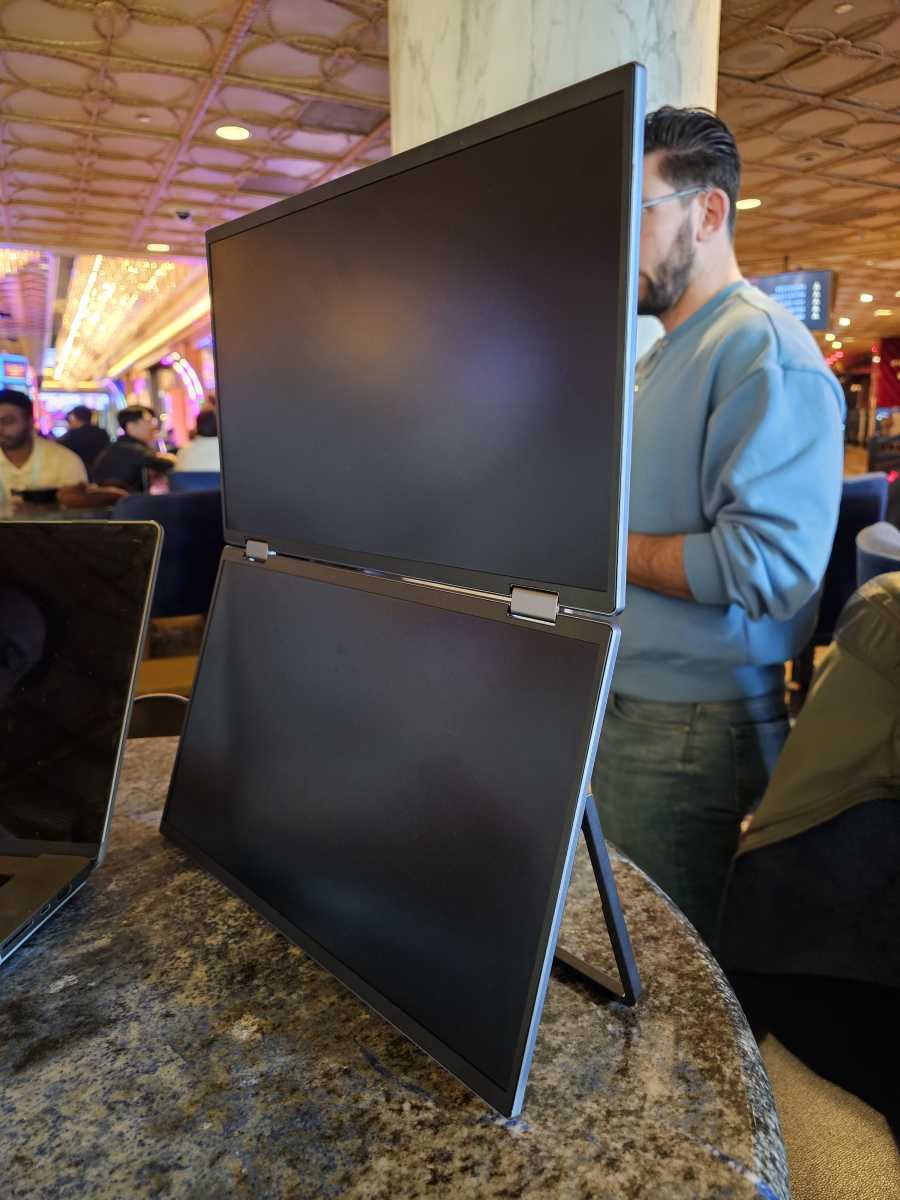If there’s any computing axiom I believe to be true, it’s this: Once you start adding monitors to your workspace, it’s very hard to give them up. Which is why I was so eager to see The Portable Monitor’s five-screen (yes, five) portable configuration at CES 2024.
Sure, it wasn’t quite what I was expecting, but I’m willing to give it a pass.
A year back, a contact persuaded me to try FOPO’s triple-display monitor, one of the first on the market at the time. FOPO’s “triple” display (in reality, two 1080p displays that are mounted on either side of your laptop) plug in to your laptop’s USB-C ports and give you extra monitors for email, Slack/Teams, and so on. Laptops don’t really allow you to tuck various windows all over your desktop like a large desktop monitor does.
So when the Belgian tech company’s pitch landed in my inbox, I was intrigued. I hustled over to a hotel near the convention center while ’80s hits played in what appeared to be a karaoke bar.

Mark Hachman / IDG
I thought that TPM had a five-screen solution — and, as it turns out, it kind of does. It just creates the four additional displays from two products: the Flex, and the Twins.
The Flex is a pair of 14-inch, 1080p displays for $469, available on the company’s website. (They’re on Amazon, too.) A 15.6-inch option is $569. You can also opt for a version made of plastic, rather than metal, which cuts the weight and price to $369.

Mark Hachman / IDG
According to TPM executives, the Flex was designed not to grab your monitor like the FOPO, in part because owners of MacBook Airs and other thin notebooks were worried about damaging the screen. So the displays stand by themselves, with both connected to your laptop via a USB-C cable.
The Twins is a $499 dual-display version of the Flex, but with two screens that can flip vertically, back over themselves. This can either create an array somewhat like the Asus ZenBook Duo, where the displays form something like a flat skyscraper of pixels. The nice thing about the Twins is that both displays fold down nearly flat, making them easy to travel with. The Flex still looks like it requires an inch or more of room, which makes it less likely they’ll slide easily into a backpack.
I originally thought all these displays (the Flex and the Twins) were connected, which would create a five-screen monstrosity. As it is, you’ll need to buy both a Twins and Flex setup, using one USB-C cable apiece to connect them to your laptop. But it is possible, if you absolutely require the power of a portable battleworkstation while on the go.




